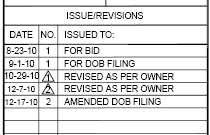Following months of planning your new office build out and relocation, your long-awaited post-move has occurred. You sit back into your office or cubicle, gaze around at your new surroundings, and take satisfaction in the hard work to get here. You start doing your work…. and your attention is immediately broken by the loud phone calls and conversations coming through the office walls. Why are you hearing the person next door? Wasn’t the point of having a private office to have privacy?
If you’re a law firm, financial services or any company where privacy is an issue, you’ll find this distracting and unacceptable. Further, you don’t require a privacy function to be unintentionally distracted by your office neighbors. But construction is complete and now you’ll have to live with it.
What tenants don’t realize is standard office designs don’t generally include acoustical treatment between interior office walls. A typical wall consists of metal track fastened directly to the floor and ceiling, metal studs, a layer of sheetrock on each side that rise six inches above the hung ceiling and that’s it. While that’s hardly ideal for a quiet office, its pretty standard nonetheless
If you want better sound isolation/absorption/deflection, you have to ask for it and there is a cost associated with that upgrade. It’s not generally included in the tenant improvement work letter, but a good relocation project manager/owner’s rep will point this out.
Sound can travel between offices due to:
- No batt insulation in the wall cavity
- Walls terminating just above the ceiling tile and not to the deck
- Poor sealing at the floor and ceiling
- Sound traveling through non-insulated or straight-through HVAC ductwork
- Glass walls
- No carpet
- Poor or no door gaskets
Sound in construction is measured as follows:
Noise Criteria (NC) Ratings: Ambient background sound levels due to the buildings’ mechanical, electrical, plumbing, or HVAC systems. Lower NC ratings correspond to quieter conditions.
Sound Transmission Class (STC): Sound transmission properties of a demising floor/ceiling assembly, partition, door, etc. The higher the STC rating, the greater the sound reduction of that assembly.
Ceiling Attenuation Class (CAC): The efficiency of a ceiling material as a barrier to airborne sound intrusion between two enclosed spaces.
Speech Privacy Potential (SPP): A function of two factors: the background sound level (expressed as Noise Criteria, NC, rating) and the in-field acoustic separation of the total construction between the adjacent spaces (expressed as Noise Isolation Class, NIC, rating).
Noise Reduction Coefficient (NRC): Used to identify the sound absorption properties of a material as tested in ideal laboratory conditions. A material with NRC 0.10 will reflect 90% of incident sound back into the space, whereas a material with NRC of 0.90 will only reflect 10% of incident sound back in the space. Therefore, for spaces with speech intelligibility requirements, surfaces with higher NRC ratings are preferred.
Levels of Speech Privacy Potential (SPP)
| Rating | NIC | Description of Privacy |
| Total Privacy | 85 | Shouting is only barely audible |
| Highly Confidential | 80 | Normal voice levels not audible. Raised voices barely audible, but not inteligible |
| Excellent | 75 | Normal voice levels barely audible. Raised voices are audible, but mostly unintelligible |
| Good | 70 | Normal voices audible, but mostly unintelligible. Raised voices are partially intelligable. |
| Fair | 65 | Normal voices audible and intelligible some of the time. Raised voices are intelligible |
| Poor | 60 | Normal voices audible and intelligible most of the time |
| None | <60 | No speech privacy |
A typical private office partition may be described as follows:

Construction Drawing above indicates: New Full Height Partition: 2 1/2″ Metal Studs @ 16″ O.C. (on center). Extending from slab to slab w/ 5/8″ Gyb Board on each side extending from slab to 6″ above finish ceiling.
What throws many tenants during design phase are the words “Full Height Partition” and they don’t read further, thus missing the fact the sheetrock is not rising to the underside of the deck above. But that is just one item to look for.
Some methods to achieve a quieter office include:
- Extend sheetrock from the floor to the underside of the deck above
- Add several layers of Sound Batt Insulation in the wall cavity
- For Ceiling Treatments, specify acoustical ceiling tile with a minimum NRC of 0.70 and CAC of 35.
- Floor Treatment: Specify carpet on 100% of the floor area.
- Doors: Specify solid-core wood doors or insulated hollow-metal doors with standard butt hinges and full perimeter sound seals including a drop seal for all Private Offices. For framed glass doors incorporate full-perimeter sound seals, including a drop seal, into the door frame, though doors with pivot hinges are not recommended as they are difficult to seal.
- For doors over carpet, add a threshold to ensure a proper seal.
- For glass door constructions, specify minimum 3/8-inch thick laminated acoustical glass.
Partition construction details must be consistent with good acoustical design practice. It is important to incorporate the following details:
– No gypsum board layers are to be continuous between two adjacent rooms; interrupt all partition intersections, and close through perimeter fascia to the base building construction.
– Provide continuous acoustical (non-hardening) caulking beads on each side of the bottom and top stud runners at the three-way intersections between the runner, floor/structure above, and gypsum board.
– Specify acoustical (non-hardening) caulking to close gaps between service outlets (e.g., electrical, telephone, and data) and gypsum board.
– Stagger the joints between multiple layers of gypsum board.
– Penetrations that interrupt studs are to be completely framed around with a nominal 1-inch gap around the penetrating element.
Seal all service penetrations in partition constructions as follows:
- Gap less than or equal to 1/4″: Acoustical sealant or similar non-hardening, ever-resilient caulking compound
- Gap from 1/4″ up to 1″: Compressed backer rod with acoustical or similar non-hardening, ever-resilient caulking compound
- Gaps over 1-inch: Filled tightly with batt insulation and heavy-density putty such as Nelson FSP or CLK Sealant; J.M. Clipper ‘Duxseal’; 3M ‘Moldable Putty.’
Each office environment is different and you should consult with an architect or acoustical consultant to achieve the desired rating for your office design.
Richard Neuman is an Owner’s Rep and Move Consultant with NY based Relocation Management Solutions, Inc. www.relocationmanagement.com
Discover more from Helping NYC & Long Island Commercial Tenants, Owners, and Developers
Subscribe to get the latest posts sent to your email.






I have had good luck in adding batting/insulation above the ceiling over the shared walls. and putting boots on the return grills. The batting is a relatively low cost for the results you get. Also, the detail at window mullions are problematic if your office is on a window line gaskets are not always installed.
Rich with the technology available today any “ambient noise” can be greatly diminished with a low cost sound masking system. For those not familiar, sound masking is an unobtrusive background sound similar to airflow that reduces distractions by reducing the intelligibility of human speech. These systems offer an “A-B-C” approach. Absorb, i.e. ceiling tiles, Block, i.e. cubicle partitions and Cover, i.e. sound masking. Feel free to contact me at jfandel@ccsprojects.com to learn more.
There are 100% demountable glass wall systems available which can be single or double paned glass to offer STC 45+ solution. What is neat about these systems is if your originally ordered a single pane panel, and you feel you need more quiet after the installation, you can add the second pane to increase the acoustic insulation -in the field- using the same framework.
Another source for sound is the return air grills. Most building use the space above the drop ceiling as a return air plenum and grills which allows the noise to travel from area to area
Good advice Paul. Thanks for the feedback.
Well done Rich, So many tenants don’t realize how sound leaky the standard tenant partitions are going to be. Everything that you recommended is what is required for private spaces. Tenants may be surprised with the cost as contractors know what comes along with the main line of defence which is gypsum board to the deck. Wires, ,ductwork, pipes and probably the most difficult to deal with, bar joist, all make that simple request of gypsum to the deck so difficult to pull off, and what makes partitions that stop at the ceiling or six inches above, the standard. Pick your spots. Take those measures for sound sensitive spaces: executive offices, conference rooms . Everyone else SHHHHHHHHHHH.